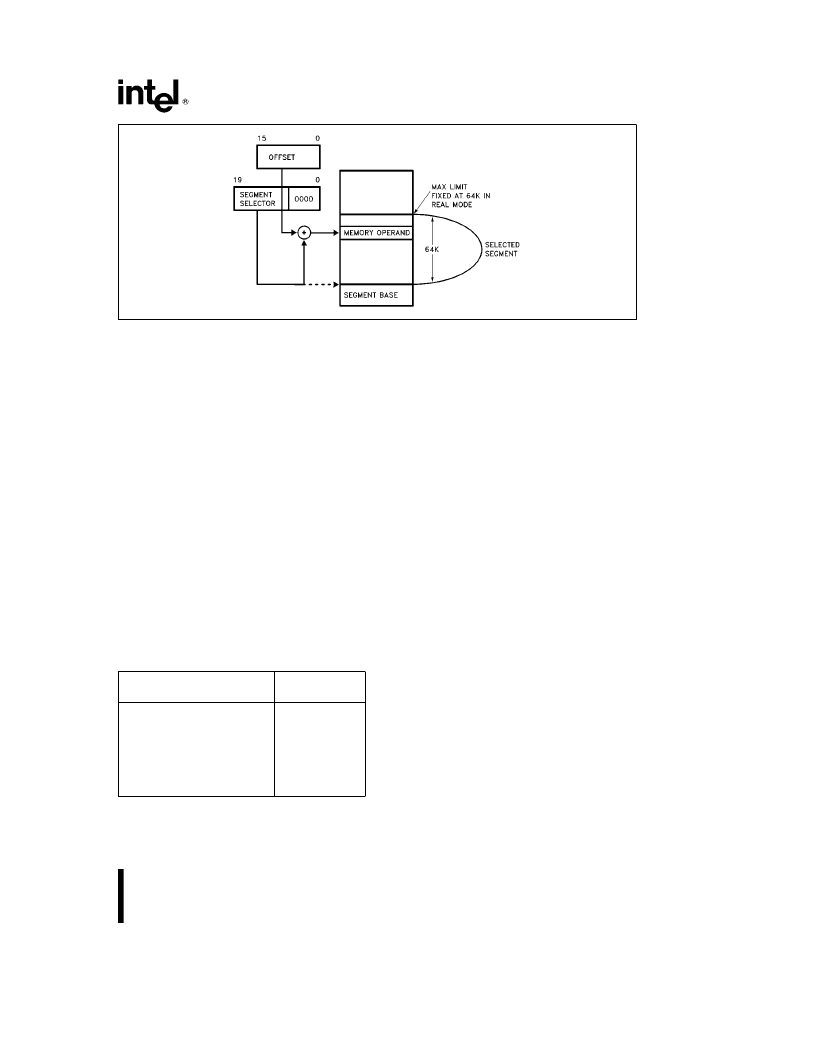- 您現(xiàn)在的位置:買(mǎi)賣(mài)IC網(wǎng) > PDF目錄377496 > intel386 DX (Intel Corp.) 32-Bit CHMOS Microprocessor With Integrated Memory Management(32位CHMOS 微處理器帶集成存儲(chǔ)管理) PDF資料下載
參數(shù)資料
| 型號(hào): | intel386 DX |
| 廠商: | Intel Corp. |
| 英文描述: | 32-Bit CHMOS Microprocessor With Integrated Memory Management(32位CHMOS 微處理器帶集成存儲(chǔ)管理) |
| 中文描述: | 32位CHMOS微處理器集成內(nèi)存管理(32位CHMOS微處理器帶集成存儲(chǔ)管理) |
| 文件頁(yè)數(shù): | 33/139頁(yè) |
| 文件大?。?/td> | 1587K |
| 代理商: | INTEL386 DX |
第1頁(yè)第2頁(yè)第3頁(yè)第4頁(yè)第5頁(yè)第6頁(yè)第7頁(yè)第8頁(yè)第9頁(yè)第10頁(yè)第11頁(yè)第12頁(yè)第13頁(yè)第14頁(yè)第15頁(yè)第16頁(yè)第17頁(yè)第18頁(yè)第19頁(yè)第20頁(yè)第21頁(yè)第22頁(yè)第23頁(yè)第24頁(yè)第25頁(yè)第26頁(yè)第27頁(yè)第28頁(yè)第29頁(yè)第30頁(yè)第31頁(yè)第32頁(yè)當(dāng)前第33頁(yè)第34頁(yè)第35頁(yè)第36頁(yè)第37頁(yè)第38頁(yè)第39頁(yè)第40頁(yè)第41頁(yè)第42頁(yè)第43頁(yè)第44頁(yè)第45頁(yè)第46頁(yè)第47頁(yè)第48頁(yè)第49頁(yè)第50頁(yè)第51頁(yè)第52頁(yè)第53頁(yè)第54頁(yè)第55頁(yè)第56頁(yè)第57頁(yè)第58頁(yè)第59頁(yè)第60頁(yè)第61頁(yè)第62頁(yè)第63頁(yè)第64頁(yè)第65頁(yè)第66頁(yè)第67頁(yè)第68頁(yè)第69頁(yè)第70頁(yè)第71頁(yè)第72頁(yè)第73頁(yè)第74頁(yè)第75頁(yè)第76頁(yè)第77頁(yè)第78頁(yè)第79頁(yè)第80頁(yè)第81頁(yè)第82頁(yè)第83頁(yè)第84頁(yè)第85頁(yè)第86頁(yè)第87頁(yè)第88頁(yè)第89頁(yè)第90頁(yè)第91頁(yè)第92頁(yè)第93頁(yè)第94頁(yè)第95頁(yè)第96頁(yè)第97頁(yè)第98頁(yè)第99頁(yè)第100頁(yè)第101頁(yè)第102頁(yè)第103頁(yè)第104頁(yè)第105頁(yè)第106頁(yè)第107頁(yè)第108頁(yè)第109頁(yè)第110頁(yè)第111頁(yè)第112頁(yè)第113頁(yè)第114頁(yè)第115頁(yè)第116頁(yè)第117頁(yè)第118頁(yè)第119頁(yè)第120頁(yè)第121頁(yè)第122頁(yè)第123頁(yè)第124頁(yè)第125頁(yè)第126頁(yè)第127頁(yè)第128頁(yè)第129頁(yè)第130頁(yè)第131頁(yè)第132頁(yè)第133頁(yè)第134頁(yè)第135頁(yè)第136頁(yè)第137頁(yè)第138頁(yè)第139頁(yè)

Intel386
TM
DX MICROPROCESSOR
231630–54
Figure 3-1. Real Address Mode Addressing
All of the Intel386 DX instructions are available in
Real Mode (except those instructions listed in 4.6.4).
The default operand size in Real Mode is 16-bits,
just like the 8086. In order to use the 32-bit registers
and addressing modes, override prefixes must be
used. In addition, the segment size on the Intel386
DX in Real Mode is 64K bytes so 32-bit effective
addresses must have a value less the 0000FFFFH.
The primary purpose of Real Mode is to set up the
processor for Protected Mode Operation.
The LOCK prefix on the Intel386 DX, even in Real
Mode, is more restrictive than on the 80286. This is
due to the addition of paging on the Intel386 DX in
Protected Mode and Virtual 8086 Mode. Paging
makes it impossible to guarantee that repeated
string instructions can be LOCKed. The Intel386 DX
can’t require that all pages holding the string be
physically present in memory. Hence, a Page Fault
(exception 14) might have to be taken during the
repeated string instruction. Therefore the LOCK pre-
fix can’t be supported during repeated string instruc-
tions.
These are the only instruction forms where the
LOCK prefix is legal on the Intel386 DX:
Opcode
Operands
(Dest, Source)
BIT Test and
SET/RESET/COMPLEMENT
XCHG
XCHG
ADD, OR, ADC, SBB,
AND, SUB, XOR
NOT, NEG, INC, DEC
Mem, Reg/immed
Reg, Mem
Mem, Reg
Mem, Reg/immed
Mem
An exception 6 will be generated if a LOCK prefix is
placed before any instruction form or opcode not
listed above. The LOCK prefix allows indivisible
read/modify/write operations on memory operands
using the instructions above. For example, even the
ADD Reg, Mem is not LOCKable, because the Mem
operand is not the destination (and therefore no
memory read/modify/operation is being performed).
Since, on the Intel386 DX, repeated string instruc-
tions are not LOCKable, it is not possible to LOCK
the bus for a long period of time. Therefore, the
LOCK prefix is not IOPL-sensitive on the Intel386
DX. The LOCK prefix can be used at any privilege
level, but only on the instruction forms listed above.
3.2 MEMORY ADDRESSING
In Real Mode the maximum memory size is limited to
1 megabyte. Thus, only address lines A2–A19 are
active. (Exception, the high address lines A20–A31
are high during CS-relative memory cycles until an
intersegment jump or call is executed (see section
2.10)).
Since paging is not allowed in Real Mode the linear
addresses are the same as physical addresses.
Physical addresses are formed in Real Mode by
adding the contents of the appropriate segment reg-
ister which is shifted left by four bits to an effective
address. This addition results in a physical address
from 00000000H to 0010FFEFH. This is compatible
with 80286 Real Mode. Since segment registers are
shifted left by 4 bits this implies that Real Mode seg-
ments always start on 16 byte boundaries.
All segments in Real Mode are exactly 64K bytes
long, and may be read, written, or executed. The
Intel386 DX will generate an exception 13 if a data
operand or instruction fetch occurs past the end of a
segment. (i.e. if an operand has an offset greater
than FFFFH, for example a word with a low byte at
FFFFH and the high byte at 0000H.)
33
相關(guān)PDF資料 |
PDF描述 |
|---|---|
| Intel386 EX | Highly Integrated, 32-Bit, Fully Static Embedded Micropocessor(32位高集成完全靜態(tài)嵌入式微處理器) |
| INTEL386 SXSA | 5-V 32-Bit Fully Static Embedded Microprocessor(5V,32位完全靜態(tài)嵌入式微處理器) |
| intel386 SX | 32-Bit CPU With a 16-Bit External Data Bus And a 24-bit External Address Bus(帶16位內(nèi)部數(shù)據(jù)總線(xiàn)和24位內(nèi)部地址總線(xiàn)32位微處理器) |
| INTEL386 | Intel386 EX Embedded Microprocessor |
| Intel387 dx | DX Math Coprocessor(32位數(shù)學(xué)協(xié)處理器) |
相關(guān)代理商/技術(shù)參數(shù) |
參數(shù)描述 |
|---|---|
| INTEL386SX | 制造商:INTEL 制造商全稱(chēng):Intel Corporation 功能描述:MICROPROCESSOR |
| INTEL387 | 制造商:INTEL 制造商全稱(chēng):Intel Corporation 功能描述:Intel387TM SX MATH COPROCESSOR |
| INTEL387DX | 制造商:未知廠家 制造商全稱(chēng):未知廠家 功能描述:Intel387 DX - MATH COPROCESSOR |
| INTEL387SX | 制造商:INTEL 制造商全稱(chēng):Intel Corporation 功能描述:Intel387 SX - MATH COPROCESSOR |
| INTEL387TMDX | 制造商:INTEL 制造商全稱(chēng):Intel Corporation 功能描述:Intel387TM DX MATH COPROCESSOR |
發(fā)布緊急采購(gòu),3分鐘左右您將得到回復(fù)。